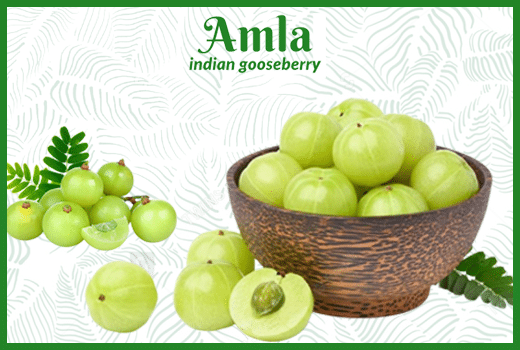Amla Fruit: A Nutritious and Healing Superfood
Amla, also known as Indian Gooseberry, is a small, green fruit that grows on the amla tree, which is native to India. The fruit is highly valued in traditional Indian medicine and is considered a “Superfood” due to its high concentration of antioxidants and Vitamin C. In this article, we’ll explore the nutritional value, health benefits, culinary uses, and traditional medicine uses of amla.
Nutritional Value of Amla
Amla is a powerhouse of nutrients, especially Vitamin C. One amla fruit contains about 20 times more Vitamin C than an average-sized orange. Vitamin C is a potent antioxidant that helps protect cells from damage and boosts the immune system. Amla is also rich in other vitamins and minerals, including Vitamin A, iron, and calcium.

Health Benefits of Amla
The health benefits of amla are numerous and well-documented. Here are a few of the most notable benefits:
- Supports Digestive Health: Amla is a natural digestive aid and can help relieve symptoms of indigestion, constipation, and acid reflux.
- Boosts the Immune System: The high concentration of Vitamin C in amla helps support a healthy immune system and can help protect against infections.
- Promotes Healthy Skin and Hair: Amla is often used in traditional Indian beauty treatments due to its high levels of antioxidants and anti-inflammatory properties. It is believed to promote healthy skin and hair, reduce fine lines and wrinkles, and even improve hair growth.
- Supports Heart Health: Amla has been shown to have potential benefits for heart health, including reducing cholesterol levels and improving blood circulation.
- Potential Benefits for the Liver and Eyes: Amla has also been shown to have potential benefits for the liver and eyes, including reducing oxidative stress and improving liver function.
Culinary Uses of Amla
Amla is a versatile fruit that can be used in a variety of culinary applications. It is often pickled or candied in India, and the juice is used to flavor drinks and sauces. Amla can also be added to smoothies, used in baking, or added to curries and stews. When cooking with amla, it’s best to use ripe, sweet fruit, as the unripe, tart fruit can be quite bitter.
Traditional Medicine and Amla
Amla has been used in traditional medicine for thousands of years, especially in Ayurveda and traditional Chinese medicine. In Ayurveda, amla is believed to help balance the three doshas – Vata, Pitta, and Kapha – and is considered to be a “rasayana,” or rejuvenating herb. In traditional Chinese medicine, amla is believed to support the digestive system and boost the immune system.
Conclusion
Amla is a nutritious and healing superfood that offers a wide range of health benefits. Whether you enjoy the fruit on its own, incorporate it into your diet, or use it as part of a traditional medicine practice, amla is a delicious and nutritious way to support your overall health and well-being.



